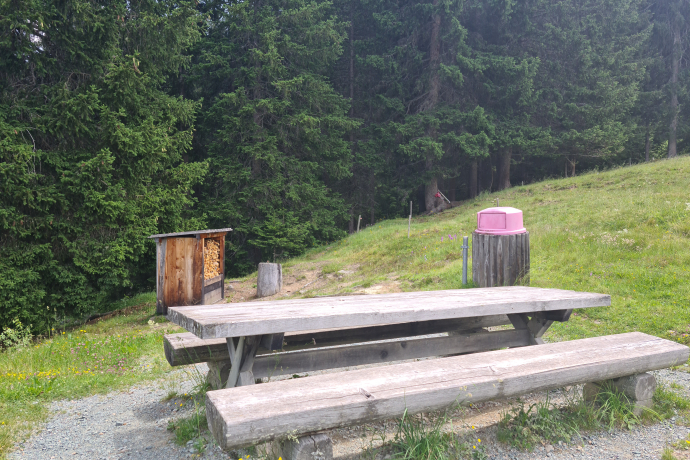006.04 Alpenpässe-Weg - Savognin - Ausserferrera


Show all 4 images

Details
Description
Savognin is situated in the heart of Switzerland's largest nature park, the Parc Ela. This park surrounds three Alpine passes: the Albula, Julier and Septimer; it offers authentic nature, varied landscapes and a living culture featuring three languages – Romansh, Italian and German. The hiking trail leads through the village and across the mediaeval stone bridge that traverses the river Gelgia (Julia). Immediately afterwards, the route starts to climb. As you leave the village, you will notice the Catholic church of Son Martegn, a unique example of the influence of Italian Baroque north of the Alps. Consecrated in 1677, its massive façade dominates the villagescape of Savognin.
The hiking trail continues uphill across meadowland, with alternating stretches of gravel road and path. To the right, the Ava da Nandro stream flows into the valley. After crossing the stream, you will soon arrive in Radons. Marmots sound the alarm with every meter you walk in Val Schmorras. It seems that the gravel road never wants to end: it keeps climbing higher and further into the valley. At the settlement of Alp Schmorras (2,277 m.a.s.l.), you embark on the last section of the ascent across meadowland to the pass of the same name (2,563 m.a.s.l.). The route down to Alp Mos is not always easy to recognise. But you will have no trouble spotting the rock wall of Piz digl Gurschus above Pass da Schmorras. Opposite you: Piz Grisch, which resembles a volcano. After walking for well over five hours, you descend across rough terrain to the pasture of Alp Mos. More and more streams flow into the Aua da Mulegn river. The two waterfalls below the pasture are evidence of the river's increasing size. This path through varying terrain, with magnificent blossoms and attractive piles of stones towards the end, finishes at more than 1,800 m.a.s.l.
You continue hiking towards the valley on a gravel road. From afar, you will recognise the village of Cresta with its old church: this listed monument affords splendid views. After Tgeas, you cross the Aua de Mulegn again and you can discover a number of anthills in the forest. You arrive in Ausserferrera a little later. The Magic Wood rock-climbing paradise just below the village is one of the world's most famous bouldering areas. In winter, this area is popular with ski tourers and ice climbers who appreciate its secluded and authentic ambience. Innerferrera is located somewhat further into the valley. In the early 1960s, the construction of the Lago di Lei dam and its power plant triggered an economic upturn. Unusually, the dam is on Swiss territory but the reservoir is in Italy.
Responsible for this content: Tourismus Savognin Bivio Albula AG.

This website uses technology and content from the Outdooractive platform.




